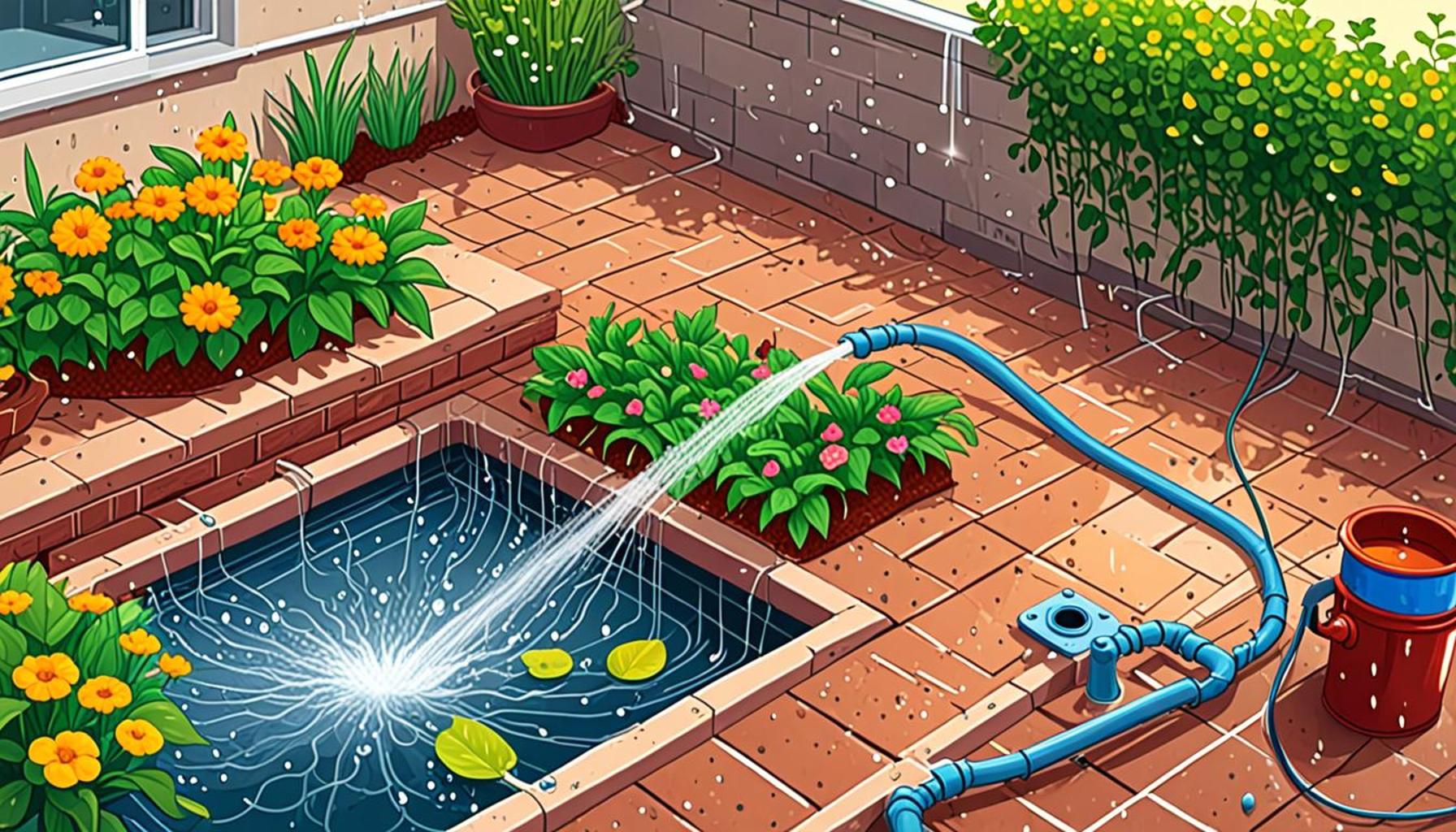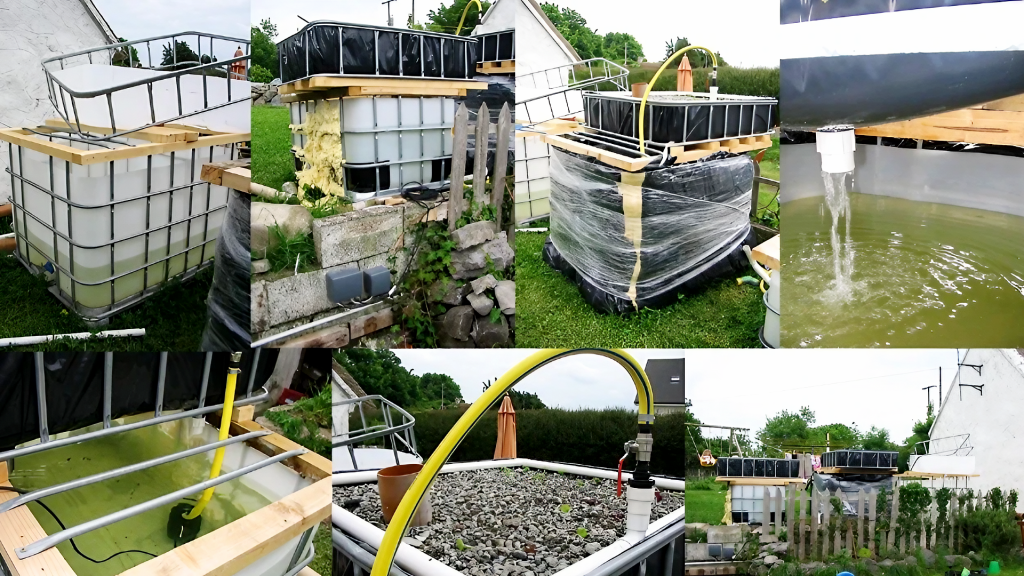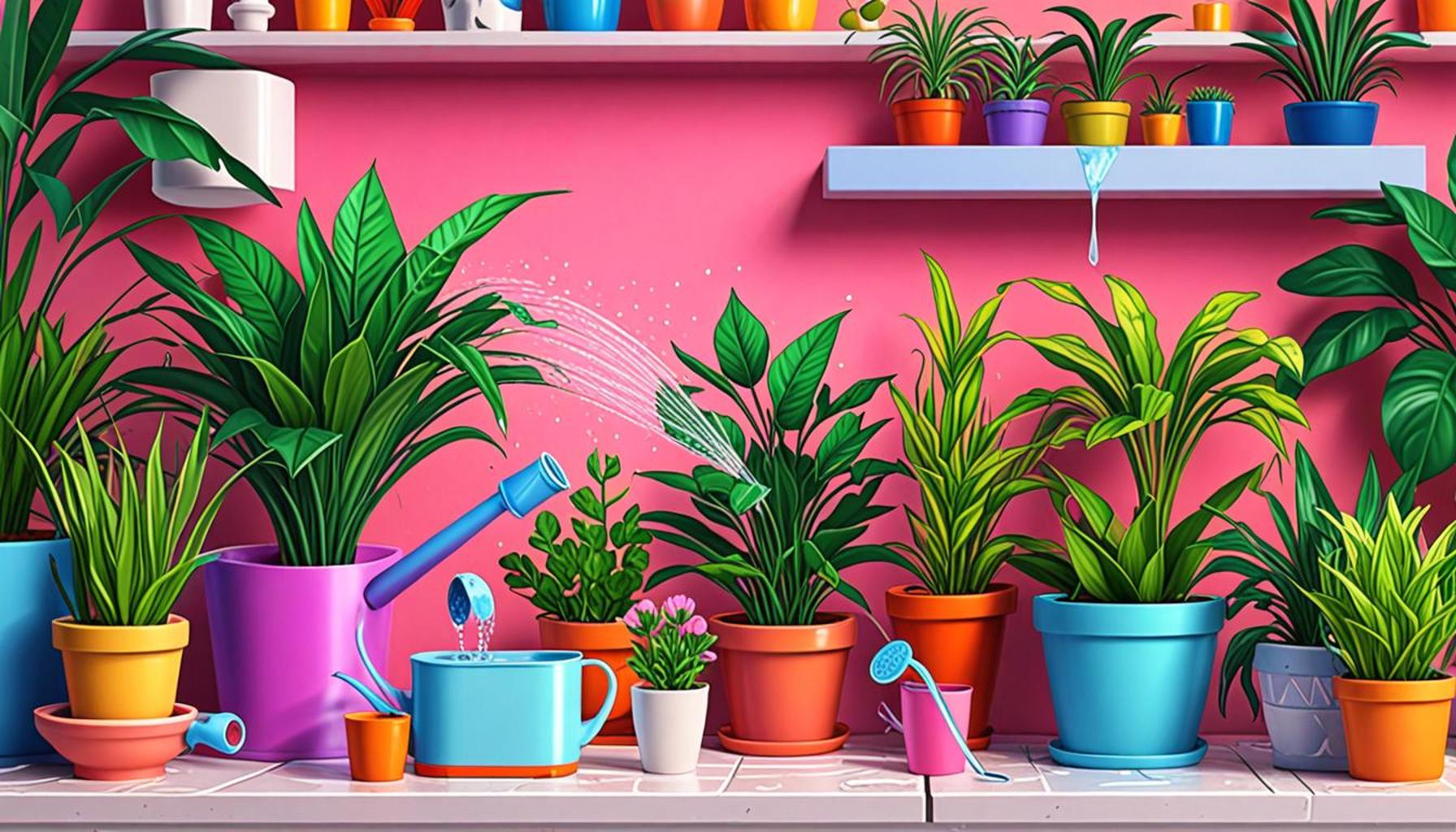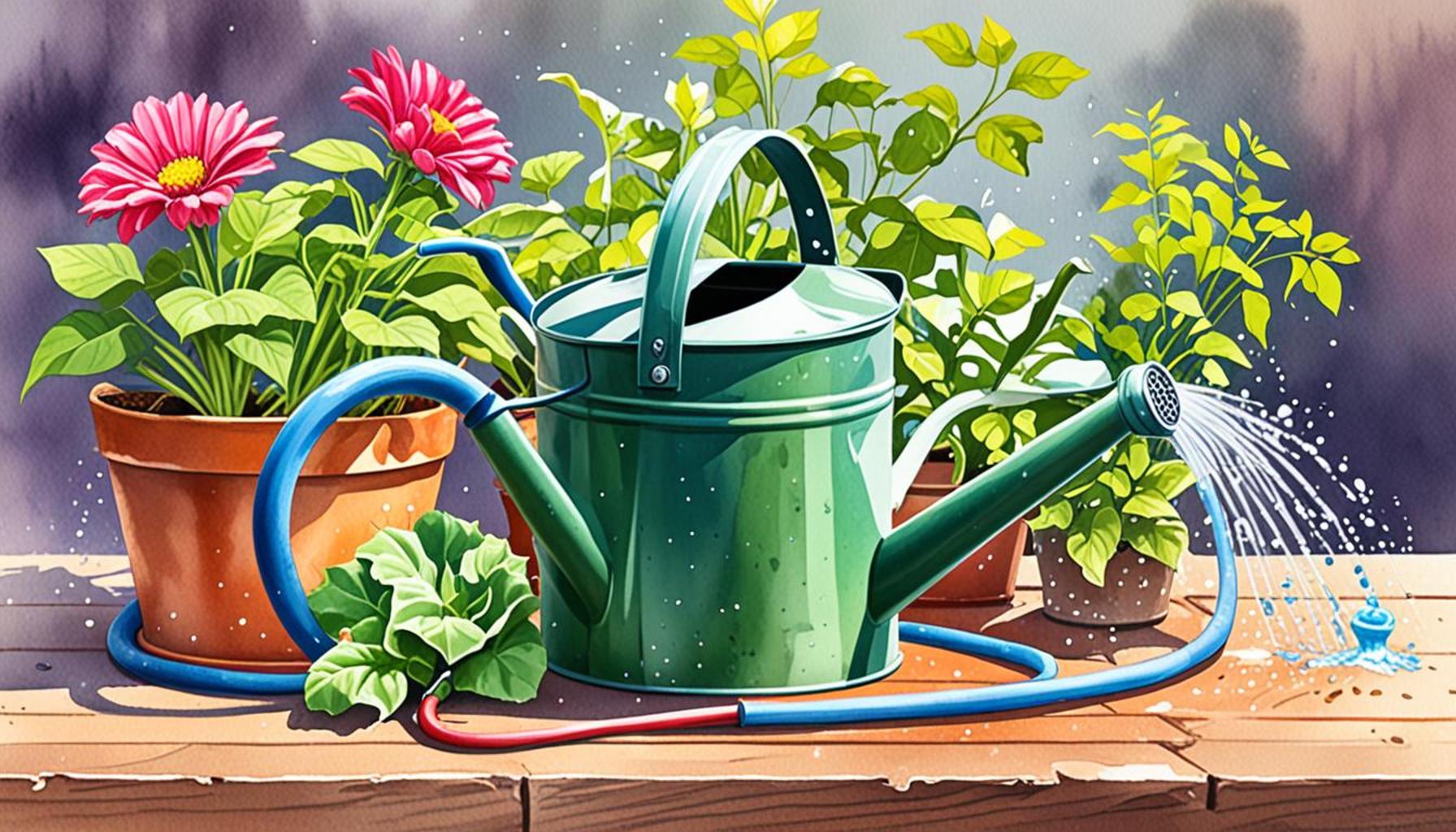How to Use Rainwater for Irrigation: Techniques and Benefits for Beginners

Understanding Rainwater Harvesting for Gardening
As global awareness of environmental challenges grows, harvesting rainwater has emerged as an essential practice, particularly for home gardeners and urban farmers. This method not only utilizes an abundant natural resource but also aids in conserving precious municipal water supplies. By collecting rainwater, individuals can significantly reduce their reliance on chemically treated water, often leading to healthier plants and a more vibrant garden. Additionally, this sustainable practice can alleviate the burden on local stormwater systems, further contributing to ecological balance.
For beginners venturing into this green initiative, understanding effective rainwater collection techniques is pivotal. Here are some critical components to keep in mind:
Collection Methods
- Rain Barrels: These are one of the most popular options among urban gardeners. Positioned under downspouts, rain barrels catch runoff from roofs, typically holding anywhere from 30 to 80 gallons of water. Many models come equipped with spigots for easy dispensing, allowing for straightforward gardening applications.
- Cisterns: For larger-scale projects, cisterns offer a more extensive solution. These underground or above-ground tanks hold thousands of gallons of water, often more suitable for larger gardens or community projects.
- Roof Catchment Systems: Innovative designs, such as sloped roofs, can enhance rainwater collection. Directing water from sloped sections into strategically placed containers maximizes collection efficiency.
Filtration Systems
Once collected, ensuring that rainwater is clean and safe for irrigation becomes critical. Installing filters aids in removing debris and contaminants. A well-placed first-flush diverter can further enhance water quality by redirecting the initial, often dirtier, runoff away from the storage system. This step is essential to maintaining the health of your garden, as contaminated water can hinder plant growth or even introduce diseases.
Storage Options
Effective storage is paramount for preserving water quality over time. Utilizing dark-colored rain barrels can prevent algae growth by blocking sunlight. Additionally, covering barrels and cisterns with lids protects against contamination and mosquito breeding.

Adopting rainwater harvesting strategies not only yields financial benefits, such as lower water bills, but it also contributes to decreasing stormwater runoff—a significant issue in many urban environments. Without proper management, stormwater can lead to flooding and water pollution. Furthermore, gardens nourished with rainwater often exhibit improved resilience against drought and climate fluctuations, making them more sustainable in the long run.
This article will delve deeper into the various collection methods and offer practical tips for successful implementation. By embracing rainwater harvesting, readers can enhance their gardening experiences while taking meaningful steps toward a sustainable lifestyle. Whether you are a seasoned gardener or just starting, exploring innovative ways to repurpose rainwater promises exciting possibilities for your green endeavors.
DISCOVER MORE: Click here for essential tips on preparing your raised bed garden soil
Key Techniques for Using Rainwater in Irrigation
Understanding the fundamental techniques for utilizing rainwater for irrigation is essential for any beginner gardener eager to adopt sustainable practices. By employing various methods and practices, you can tap into this resource effectively, ensuring your plants thrive while also contributing to environmental conservation. Below are some approaches to consider that will help you make the most of harvested rainwater:
1. Direct Irrigation
The simplest method of using rainwater is by directing it straight to your garden. Utilizing hoses connected to your rain barrels or cisterns allows for easy dissemination of water right where it’s needed. A soaker hose or a drip irrigation system can be particularly beneficial, delivering consistent moisture directly to the root zones of your plants while minimizing evaporation and waste.
2. Watering Schedule
Timing your watering is crucial for maximizing the benefits of rainwater. Ideally, the early morning or late afternoon is the best time to irrigate your plants because temperatures are cooler, reducing evaporation. Additionally, synchronizing your watering regimen with forecasted rainfall can further conserve your rainwater supply and promote healthy plant growth.
3. Soil Moisture Monitoring
Maintaining the optimal moisture level in your soil enhances plant vitality. Investing in a simple soil moisture meter can provide valuable insights into when to water your garden. By ensuring your plants receive adequate yet not excessive moisture, you foster a robust growing environment that supports their development.
4. Companion Planting
Integrating companion planting techniques into your garden can enhance water efficiency. Certain plants thrive better when planted together, leading to improved moisture retention in the soil. For instance, pairing drought-tolerant crops with others that require more humidity can create a balanced ecosystem, where each plant benefits from the other’s growth patterns.
5. Strategic Plant Selection
Choosing the right plants for your garden is another essential aspect of successful irrigation with rainwater. Focus on native plants and drought-resistant varieties that thrive under local conditions, requiring less water overall. Examples of such plants include lavender, black-eyed Susan, and coneflower. By selecting resilient varieties, you can reduce the frequency of irrigation and make rainwater even more effective.
Implementing these key techniques can vastly improve your rainwater irrigation strategy. Not only will you witness flourishing plants, but you’ll also foster an engaging and eco-friendly gardening practice. As you continue to learn about the intricacies of rainwater harvesting, you’ll discover the rewarding experience it brings, aligning your gardening efforts with sustainable living.
How to Utilize Rainwater Effectively
To effectively use rainwater for irrigation, beginners should start by setting up a proper collection system. Here are some key techniques that can maximize the benefits:
1. Install a Rain Barrel
Rain barrels are a simple and efficient way to collect rainwater from your roof. By directing downspouts into barrels, you can gather hundreds of gallons during a heavy rainstorm. This collected water can then be used directly for watering your plants, minimizing water waste and conserving resources.
2. Implement a Drip Irrigation System
One of the best techniques to apply collected rainwater is by utilizing a drip irrigation system. This method delivers water directly to the plant roots, ensuring that the water penetrates deeply into the soil and reduces evaporation. It is particularly beneficial for garden beds and flower gardens.
3. Consider a Rainwater Management System
If you are serious about using rainwater efficiently, consider investing in a rainwater management system. These systems usually involve more complex setups, including filters and pumps to manage the flow of water, ensuring a consistent supply for your irrigation needs.
Benefits of Rainwater Irrigation
Using rainwater for irrigation offers numerous benefits that go beyond just water savings. It’s a sustainable practice, reducing your dependence on municipal water systems, and it’s free! Furthermore, rainwater is naturally soft and devoid of salts and chemicals, making it a healthier choice for your plants.To explore more about rainwater irrigation techniques and benefits, beginners can look into local workshops or online resources that provide further education on sustainable gardening practices. As the demand for eco-friendly solutions grows, understanding rainwater harvesting becomes an invaluable skill.
| Technique | Benefits |
|---|---|
| Rain Barrels | Collect large amounts of water for free |
| Drip Irrigation | Directs water to roots, reducing waste |
With these techniques and insights, beginners can take significant strides in their journey toward sustainable gardening using rainwater. Remember, every drop counts!
DIVE DEEPER: Click here for expert tips on soil layering
Additional Benefits of Utilizing Rainwater for Irrigation
Beyond the fundamental techniques for intercepting and using rainwater, understanding the broader advantages of this sustainable practice can motivate beginner gardeners to implement these methods. Utilizing rainwater for irrigation not only provides ecological benefits but also supports your gardening efforts in various other beneficial ways. Here are some key advantages to consider:
1. Cost Savings
One of the most compelling reasons to harness rainwater for irrigation is the potential for significant cost savings. With increasing water rates in many areas across the United States, relying on rainwater can lead to reduced water bills. By using a rainwater harvesting system, you can supplement your irrigation needs without the expense of municipal water. This can be particularly beneficial during drought-prone seasons when water restrictions may make it difficult to maintain a lush garden.
2. Improved Plant Health
Rainwater is naturally soft and free of the chemicals often found in tap water, such as chlorine and fluoride. This means that irrigating your plants with rainwater can enhance their overall health and growth. Rainwater also contains beneficial minerals that help stimulate plant growth, leading to stronger root systems and increased resilience against pests and diseases. Studies have shown that plants watered with rainwater often display better vitality and productivity compared to those watered with treated municipal sources.
3. Environmental Conservation
Using rainwater for irrigation contributes directly to environmental sustainability. By capturing and utilizing rainwater, you reduce the demand on local water supplies, which helps preserve valuable resources in your area. Furthermore, this practice decreases stormwater runoff, which can lead to pollution in nearby waterways. When rainwater is redirected into your garden instead, it allows for natural filtration and a healthier ecosystem. Engaging in rainwater harvesting not only benefits your garden but also plays a vital role in protecting local biodiversity.
4. Drought Resilience
As climate change continues to impact weather patterns, many regions in the U.S. are experiencing more frequent droughts. Harvesting rainwater creates a buffer against these dry spells, ensuring that you have a reliable water source during critical growing periods. By building a rainwater collection system, such as a series of barrels or a larger cistern, you can ensure that your garden remains adequately watered even when natural rainfall is scarce. This forward-thinking approach aids sustainable gardening practices and showcases your commitment to environmental stewardship.
5. Educational Opportunity
Implementing a rainwater irrigation system can serve as an educational tool, allowing you to learn more about permaculture, hydrology, and sustainable practices. As you explore the nuances of collecting and using rainwater, you can also share this knowledge with your local community. Workshops, presentations, and local gardening clubs can be excellent platforms for spreading awareness about the benefits of rainwater harvesting and its role in combating climate change and promoting environmental conservation.
Overall, the benefits of utilizing rainwater for irrigation extend far beyond water conservation. As you delve deeper into this practice, you’ll uncover a wealth of advantages that not only support your gardening efforts but also contribute to a more sustainable future. Integrating rainwater harvesting into your gardening routine is a rewarding venture that aligns daily activities with environmentally responsible living.
DISCOVER MORE: Click here to learn about soil testing
Conclusion: Embrace the Benefits of Rainwater Irrigation
In conclusion, utilizing rainwater for irrigation presents an array of advantages that can significantly enhance your gardening experience while contributing to global sustainability efforts. From the practical benefits of cost savings on water bills to the improved health and vitality of your plants, employing rainwater collection techniques enables beginners to nurture a thriving garden environment. By choosing this eco-friendly practice, you also actively engage in environmental conservation, helping to preserve precious local water resources and reduce harmful runoff.
Moreover, as our climate continues to shift, rainwater harvesting serves as a reliable solution for increasing drought resilience, ensuring you have access to water even during the driest seasons. Taking the initiative to implement a rainwater collection system not only inspires a deeper connection to your garden, but it also offers an educational opportunity to learn and share knowledge with others. By spreading awareness of the benefits of rainwater harvesting, you can promote a culture of sustainable gardening practices within your community.
This journey into rainwater irrigation is just the beginning. As you integrate these techniques into your routine, you’ll also cultivate a greater sense of environmental responsibility. Whether you start small with a rain barrel or invest in an elaborate systems, the rewards are undeniable. So, embrace the art of harvesting rainwater, and watch your garden flourish while contributing to a sustainable future for all.


